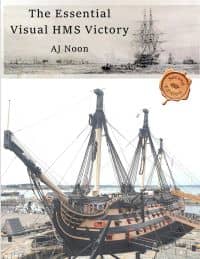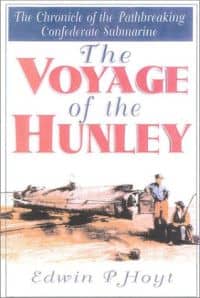AOS Naval Non Fiction - Famous Ships
Non-Fiction books which are about specific famous ships from the Age of Sail.

- Details
- By: A. J. Noon
- Title: The Essential Visual HMS Victory
- First Published by: Redvark Publishing Limited
- First Published Format: PB
- First Published Date: 27 November 2021
- ISBN-10: 183843321X
- ISBN-13: 978-1838433215

- Details
- By: Edwin P. Hoyt
- Title: The Voyage of the Hunley
- First Published by: Burford Books
- First Published Format: HC
- First Published Date: 2002

- Details
- By: David Grann
On 28th January 1742, a ramshackle vessel of patched-together wood and cloth washed up on the coast of Brazil. Inside were thirty emaciated men, barely alive, and they had an extraordinary tale to tell. They were survivors of His Majesty’s ship The Wager, a British vessel that had left England in 1740 on a secret mission during an imperial war with Spain. While chasing a Spanish treasure-filled galleon, The Wager was wrecked on a desolate island off the coast of Patagonia. The crew, marooned for months and facing starvation, built the flimsy craft and sailed for more than a hundred days, traversing 2,500 miles of storm-wracked seas. They were greeted as heroes.
Then, six months later, another, even more decrepit, craft landed on the coast of Chile. This boat contained just three castaways and they had a very different story to tell. The thirty sailors who landed in Brazil were not heroes – they were mutineers. The first group responded with counter-charges of their own, of a tyrannical and murderous captain and his henchmen. While stranded on the island the crew had fallen into anarchy, with warring factions fighting for dominion over the barren wilderness. As accusations of treachery and murder flew, the Admiralty convened a court martial to determine who was telling the truth. The stakes were life-and-death—for whomever the court found guilty could hang.
- Title: The Wager: A Tale of Shipwreck, Mutiny and Murder
- First Published by: Simon & Schuster
- First Published Place: UK
- First Published Format: HC
- First Published Date: 11 May 2023
- ISBN-10: 147118367X
- ISBN-13: 978-1471183676

- Details
- By: Tom Chaffin
- Title: The H. L. Hunley: The Secret Hope of the Confederacy
- First Published by: Hill & Wang
- First Published Format: HC
- First Published Date: 30 September 2008
- ISBN-10: 0809095122
- ISBN-13: 978-0809095124

- Details
- By: Angus Konstam
- Title: Mutiny on the Spanish Main: HMS Hermione and the Royal Navy’s revenge
- First Published by: Osprey Publishing
- First Published Format: HC
- First Published Date: 29 October 2020
- ISBN-10: 1472833791
- ISBN-13: 978-1472833792

- Details
- By: Richard Endsor
- Title: The Warship Anne
- First Published by: Conway
- First Published Format: HC
- First Published Date: 23 February 2017
- ISBN-10: 1844864391
- ISBN-13: 9781844864393